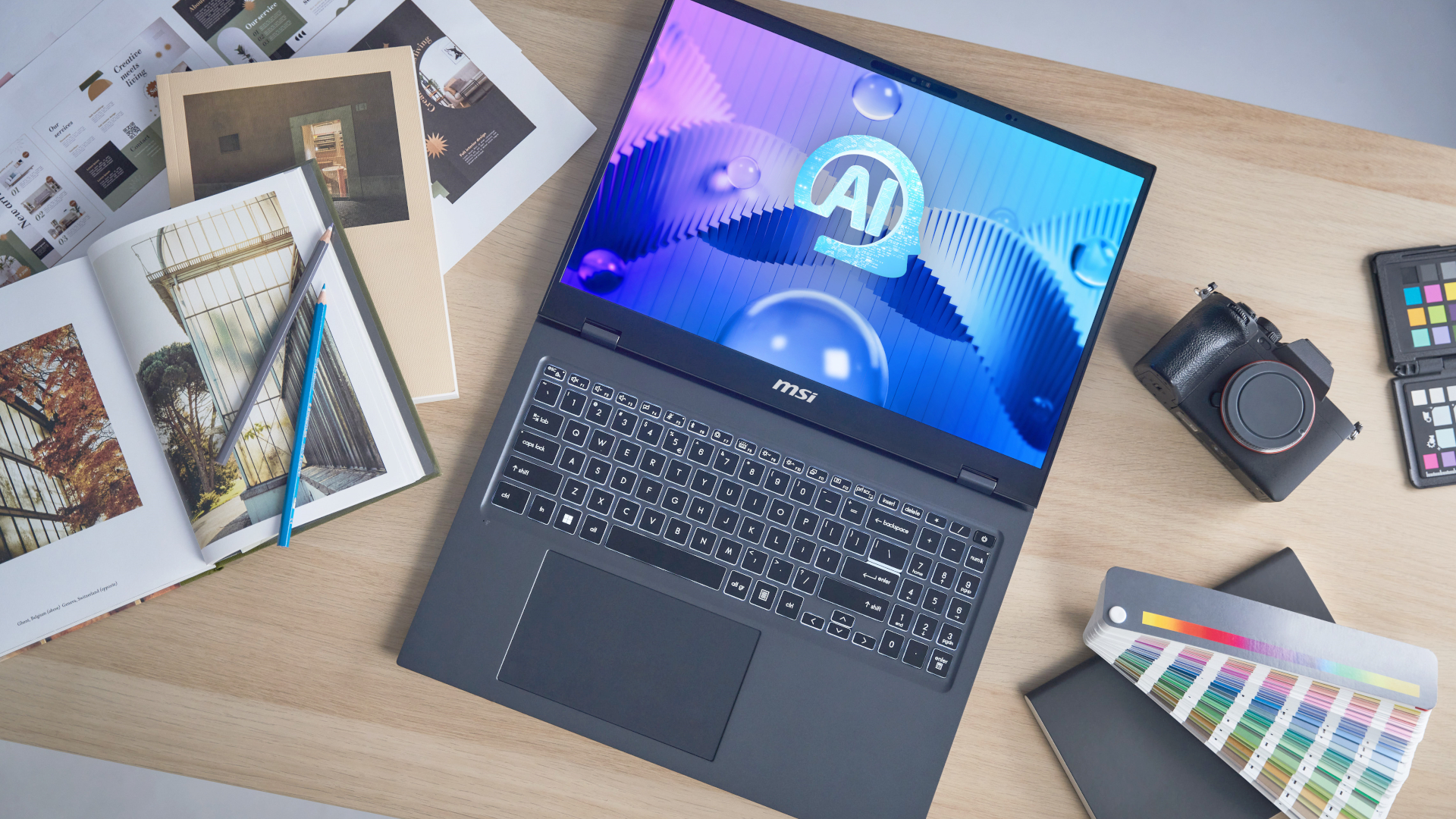MSI Prestige 16 steps into the AI revolution with EVO and Studio refits
Micro-Star, macro potential

Today, MSI joins the next generation of computing after announcing the release of its latest Prestige 16 AI Series and Prestige 13 AI Evo laptops. It’s the same top-flight MSI experience that millions around the world have come to expect — featuring the brand’s signature premium aesthetics and cutting-edge components that promise impressive performance and luxurious style. However, these laptops take things a step further,
The future is AI, and that’s not me saying we’re all marching headlong into a dystopian landscape where Microsoft Bing Chat rules over us with an ion fist. Instead, AI is primed to transform the tech-space with its hardware boosting and software enhancing capabilities.
The rise of generative AI is unleashing a wave of new software that can open up entirely new experiences for users. While entirely attainable, gaining results similar to what AI can produce in mere seconds would previously have taken users hours, if not days, weeks, months, or even years depending on how much learning and practice would be required. AI is changing the landscape of computers, and that’s why an AI-capable PC is an absolute must-have heading into 2024.
MSI Prestige 16 AI Series
Price: $1,399 (starting)
Display: 16-inch, up to UHD+ (3840 x 2400), OLED/IPS
CPU: up to Intel Core Ultra 9
GPU: up to Nvidia GeForce RTX 4070
RAM: up to 32GB
Size: 14 x 10 x 0.66 ~ 0.74 inches
Weight: 3.53 pounds
Calling the Prestige 16 AI Evo/Studio cutting-edge, is no understatement thanks to its adoption of Intel’s latest Intel Core Ultra 9 processor. It’s the very same processor offering both integrated Intel Arc graphics and a Neural Processing Unit (NPU).
Intel’s NPU inclusion is an exciting development that affords the acceleration of AI and machine learning tasks along with a more efficient computing pipeline that draws less power for previously CPU/GPU intensive AI-related tasks. To take advantage of this new NPU further, Intel has been hard at work collaborating with the developers of over 100 applications to ensure maximum performance across workflows.
MSI has also developed a new MSI AI Engine for its AI laptops which will automatically adjust the hardware settings of the machine based on current usage. This allows the Prestige 16 to intuitively switch between “intelligent” modes for gaming, work, meetings, and entertainment to target optimal performance and user experience at all times.

Not content with providing us with the performance and efficiency enhancements of Intel’s new Ultra 9 processor, MSI have also brought sweeping upgrades across the board with the Prestige 16 including Wi-Fi 7, a 99.9 WHr battery life, and USB Type-C charging with Power Delivery 3.1, which allows up to 140W of charge.
Stay in the know with Laptop Mag
Get our in-depth reviews, helpful tips, great deals, and the biggest news stories delivered to your inbox.
Need a laptop with a little more kick? Configurations allow you to take your Intel Evo certified Prestige 16 up a notch with an OLED panel, up to 32GB of RAM, and bolstered graphical performance by way of Nvidia’s powerful GeForce RTX 4070 GPU.
Configurations for the new Prestige 16 AI EVO are available now on Newegg for a starting price of $1,399 — with availability at Costco, Best Buy, B&H, and Micro Center coming soon.
If you're looking for something a little more portable and lightweight, then MSI have also just released configurations of the Prestige 13 AI EVO with the same Intel Core Ultra processor, and a 75WHrs battery life that's just 990 grams in weight! Pricing starts from $1,049 at Newegg.
What is an NPU?
An NPU, or Neural Processing Unit, might sound alien and new. However, it’s a similar technology to that which you may have previously encountered within Apple Silicon devices featuring the Apple Neural Engine (ANE), or even Google’s Pixel phones with their Tensor (TPU) chipsets.
The job of an NPU is to improve the execution of machine learning duties, taking much of the heavy lifting away from a device’s CPU/GPU. Having a dedicated microprocessor to rely on for handling the number crunching of these specific tasks can result in dramatically improved performance and efficiency. This means a faster, more responsive, and more energy efficient chipset — which is exactly why NPUs have more commonly been found in mobile devices thus far.
Common NPU duties can include everything from implementing the background blur on your Microsoft Teams/Google Meet calls to powering the facial, fingerprint, or iris recognition of security features like Windows Hello. They’re also ideal for improving the performance of generative AI features in software like Adobe Photoshop, Stable Diffusion, and more.

Rael Hornby, potentially influenced by far too many LucasArts titles at an early age, once thought he’d grow up to be a mighty pirate. However, after several interventions with close friends and family members, you’re now much more likely to see his name attached to the bylines of tech articles. While not maintaining a double life as an aspiring writer by day and indie game dev by night, you’ll find him sat in a corner somewhere muttering to himself about microtransactions or hunting down promising indie games on Twitter.










